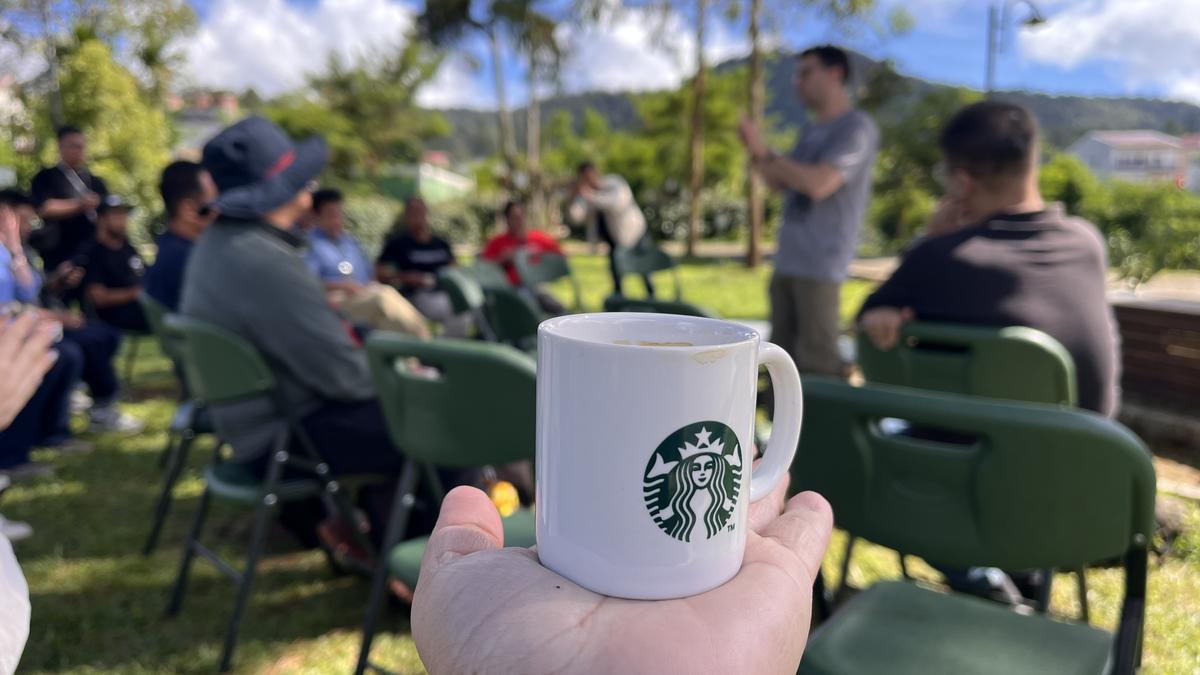North Sumatra, a province close to the Equator, enjoys a tropical climate. Sudden, unannounced showers keep the temperatures relatively low but add to the region’s humidity. The result is a lush, green landscape as far as the eye can see. This also makes this region a thriving place for coffee.
The road to the Starbucks Farmer Support Center in Dolat Rayat, a two-hour drive from Medan, is lined with vibrant roadside stalls. Fruit vendors sell everything from durian and avocado to orange, snake fruit, and betel nut. Dotted between them are humble coffee shops — North Sumatra’s answer to India’s roadside chai tapris.
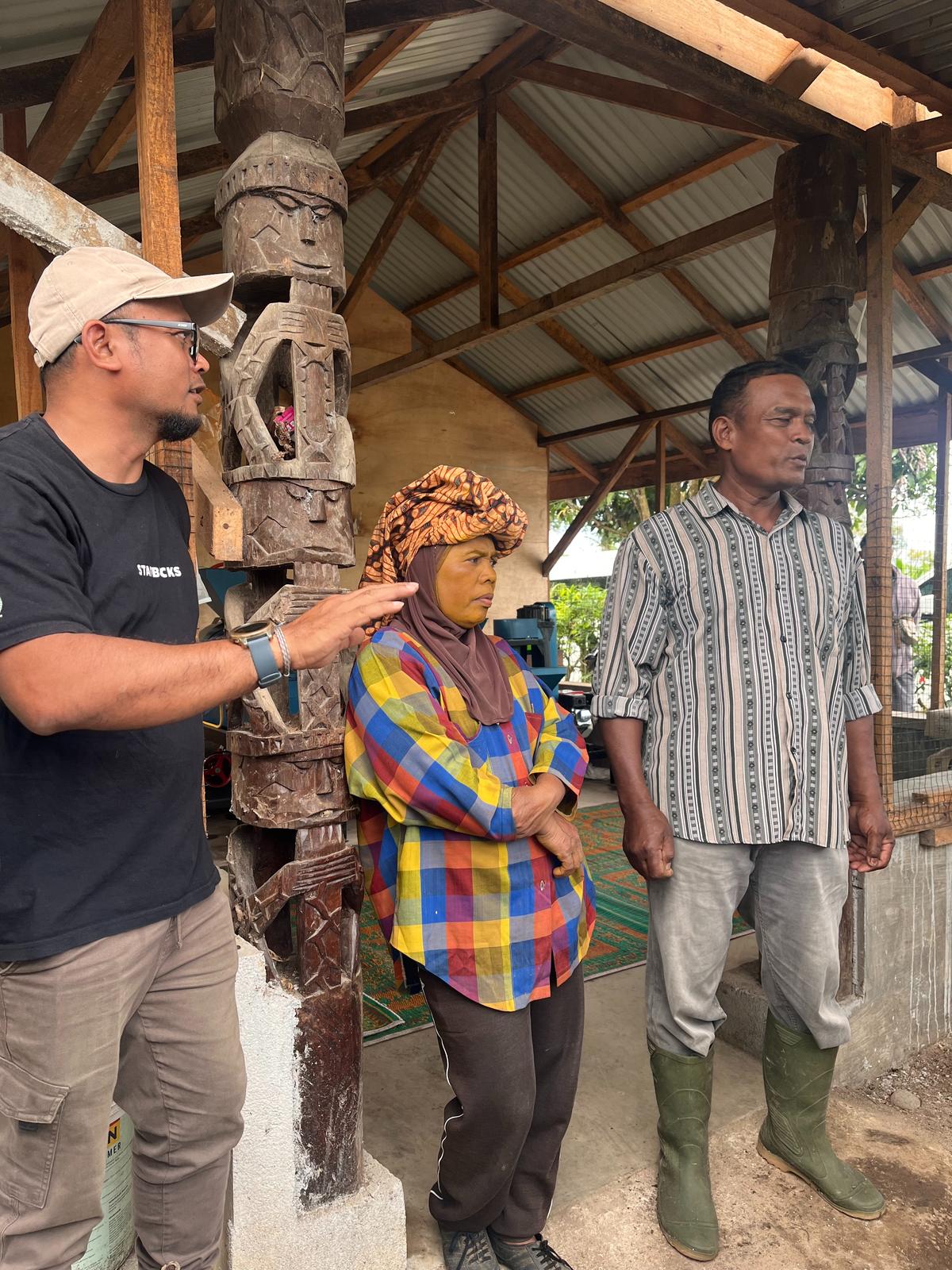
Ngamanken Pelawi and his wife Junita Br Surbakti with agronomist Robertus Tri Hastoaj
| Photo Credit:
Prabalika M Borah
At the FSC the team greeted us with fruits. Sweet, juicy mangosteen, snake fruit and passion fruit. Yes, even the passion fruits here are sweet. But, what about the coffee?
A brief walk to the coffee nursery brought us to a goat pen. The goats’ poop pellets are used as nitro fixer and the goats, especially the kids, love it when there are visitors. They bleat, until visitors get closer and feed them their favourite leaves and grass from the basket kept outside the pen. One kid in particular loves head scratches and nibbles our hands when he feels he has not had enough of the head scratch.
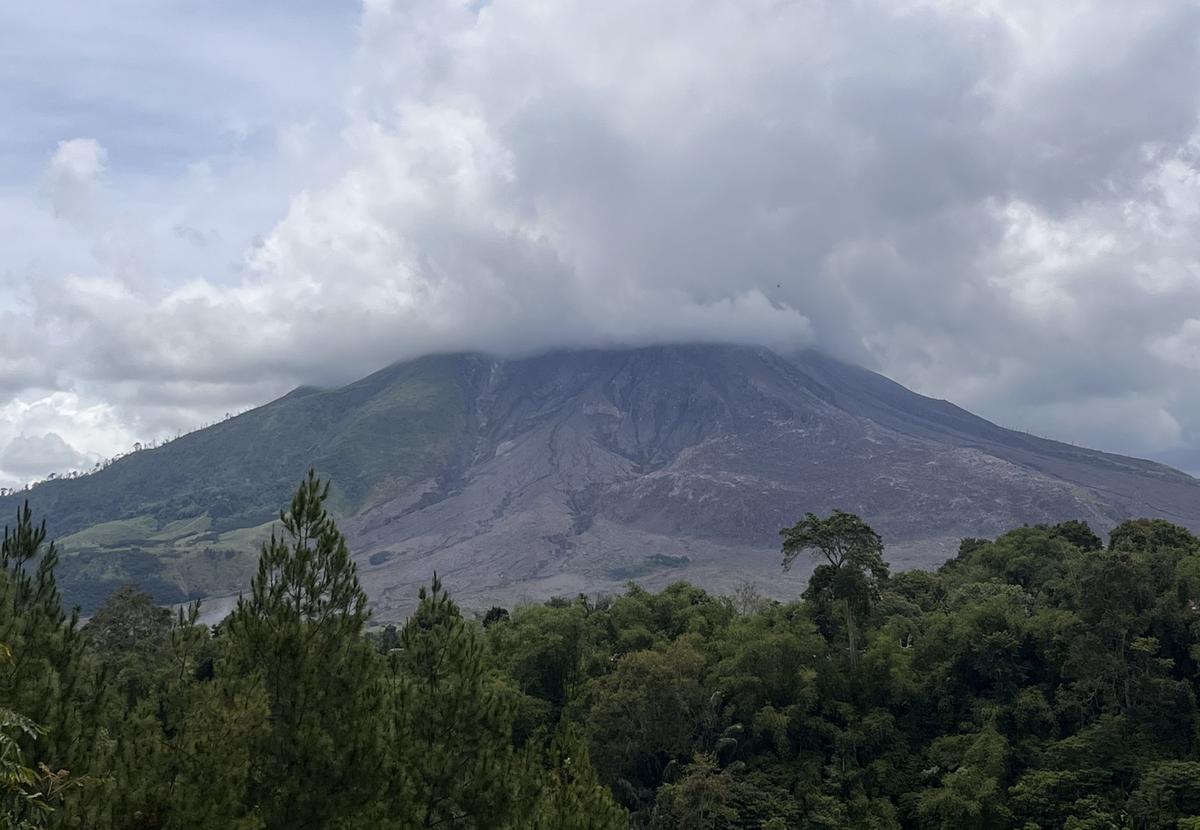
Mount Sinabung from Ngamanken Pelawi and his wife Junita Br Surbakti coffee plantation.
| Photo Credit:
Prabalika M Borah
At the nursery, we are shown the life cycle of a coffee bean from seed to a sapling ready to be planted. Following which we settle for a coffee cupping session with Brittany Zeller, coffee development lead for Global Coffee and Sustainability at Starbucks. Sniff, slurp, spit. Coffee cupping is all about awakening your senses to aroma, flavour and mouth feel. Much like a wine tasting with a few more steps before actually tasting the beverage.
Brittany informs, “your notes need not match mine or anyone. It all depends on what flavour palate of yours is awakened at the moment.”

Cupping session with Brittany Zellar
| Photo Credit:
Prabalika M Borah
Happy to report that I picked on the fruity and spicy notes of the region. Flavours with jackfruit, banana and peach. This, however, also depends on the type of fermentation and not purely the terrain or region the coffee came from. The spicy notes were that of pepper and cinnamon.
Now that we cupped some coffee it was time to see where coffee grows. We travelled to see this in action, visiting a first generation coffee farm in Cimbang owned by Ngamanken Pelawi and his wife Junita Br Surbakti. Located just 14 kilometres from Mount Sinabung. On the way, we saw dragon and snake fruit orchards Here avocado trees can be spotted as commonly as spotting neem trees in India.
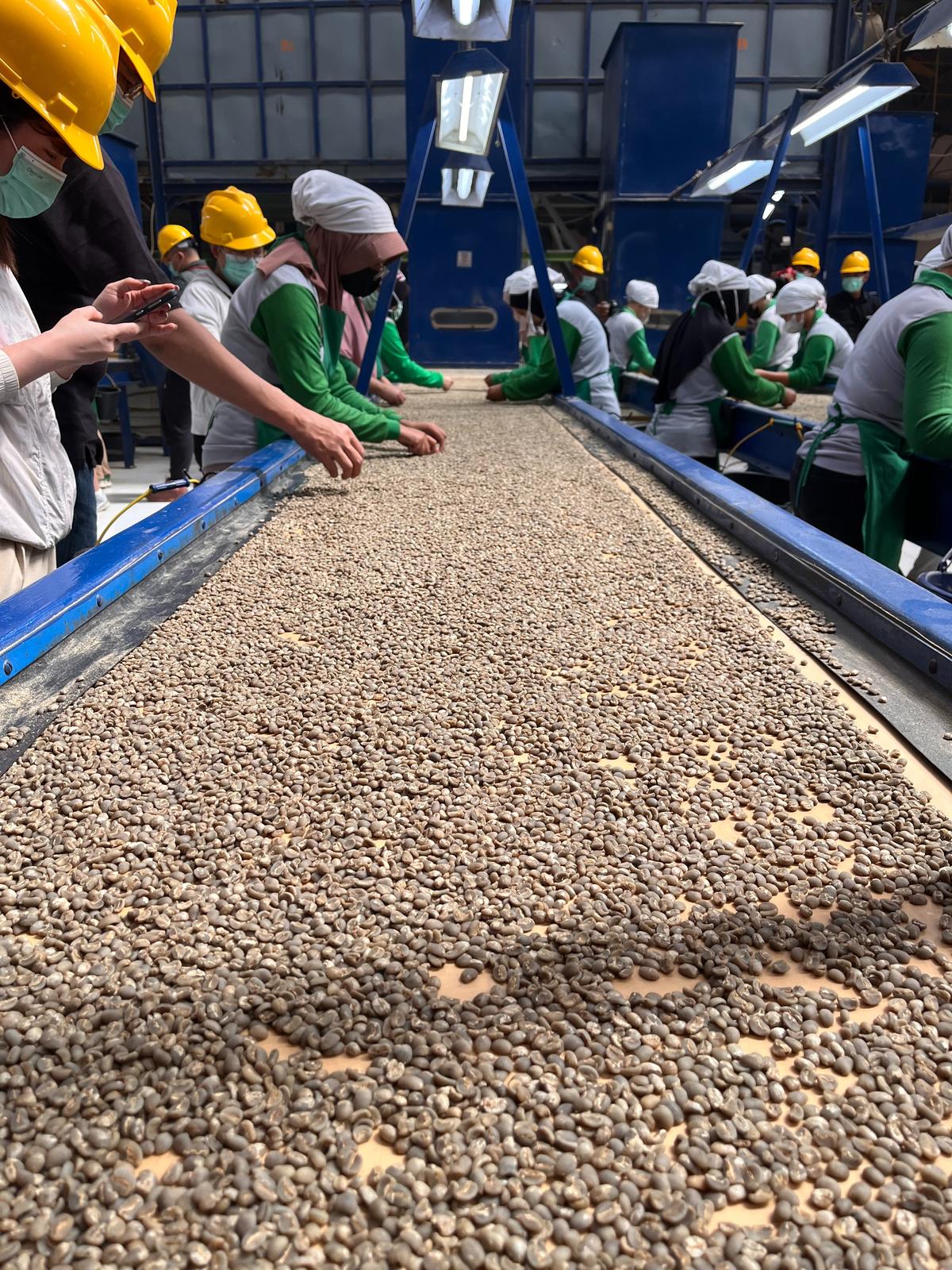
Coffee beans being processed at a dry processing unit
| Photo Credit:
Prabalika M Borah
When the volcano Sinabung erupted in 2016, Ngamanken Pelawi and Junita Br Surbakti’s mandarin orchard was destroyed, buried in volcanic ash. The financial and emotional toll was immense. But nearby, another farm — spared by the ash — had managed to cultivate coffee. That is when the couple learned about Starbucks’ sapling distribution programme.
Pelawi wasted no time. He secured saplings, planted them, and was encouraged by their steady growth. He had not set out to become a coffee farmer — but today, he is part of North Sumatra’s thriving coffee movement in what is now the world’s third-largest coffee-producing region.
Four years later, he enjoyed a decent harvest. Within a decade, his farm’s income had grown tenfold. “To me, the coffee plantation is like going to the bank — you harvest, you earn,” says Junita with a smile.
Pelawi adds, “We planted the saplings without much knowledge. Then agronomists from Starbucks FSC approached us — and that changed our lives.”
The support has not stopped. Farmers like Pelawi are now trained in natural pest management, tree canopy pruning, and the right choice of support crops. Given Sumatra’s remote terrain, most coffee farming here is small-scale and rural — often in backyards and tiny family plots. Even the processing is decentralised, with beans dried and pulped on-site before being sent to regional mills.
At the end of our visit, Pelawi walked us through the harvest and pulping process, before treating us to a cup of freshly brewed coffee — and bananas picked from his garden.
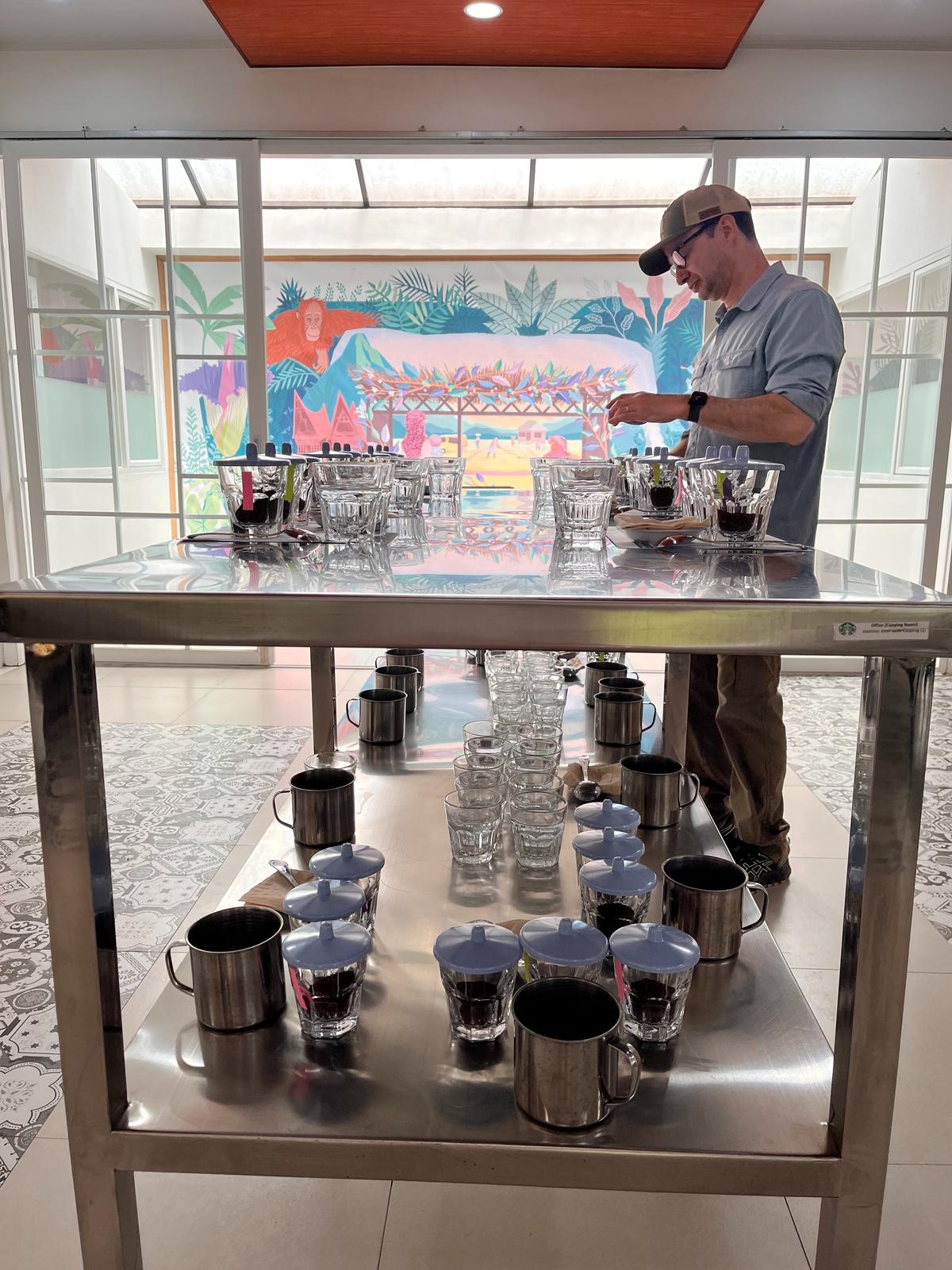
Matt Perry, coffee buyer, Starbucks Coffee Trading Company
| Photo Credit:
Prabalika M Borah
Side notes: The dragon fruits are in grown in trellis. Each plants comes with a light bulb. I asked the designated driver of the car about the light bulb. He replied: Dragon fruits need light to grow and thrive. On extremely cloudy days and at night, farmers switch on the light to fool them into thinking it is day time and they continue to grow. This is called working tirelessly, day and night.
The writer was in North Sumatra on the invitation of Starbucks

